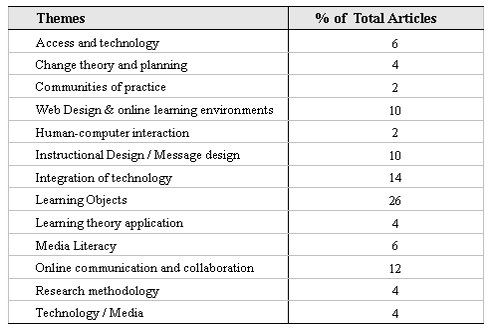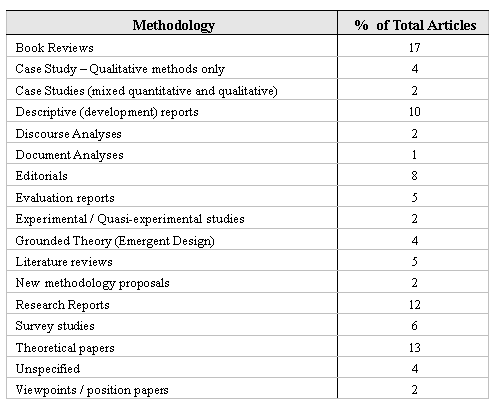
This issue heralds a time of transition and renewal as Mary Kennedy and I pass on the helm to a new Editorial team under the very capable leadership of Michele Jacobsen and Bruce Clark at the University of Calgary, and François Desjardins at l’Université d’Ottawa. I am very excited about the possibilities that this change affords in terms of, not only taking the journal in new directions, but involving graduate students in the editorial and publication process. This holds the promise of making CJLT / RCAT a sound educational tool in addition to being an important vehicle for the dissemination of our work. In this regard, we have been very fortunate to receive a renewal of our Publication Grant from the Social Sciences and Humanities Council of Canada this year and to have it increased from $7000 for three years (2001-2004) to $37 000 over the next three years (2005 – 2008)!
Mary and I are certainly very proud of what we have accomplished in achieving a real renaissance of the journal and being able to re-establish it as a well regarded, quality, scholarly journal. In addition, we succeeded in taking the journal one further step in its evolution and launching a very successful partner website for the publication (www.cjlt.ca). However, none of this would have been possible without the very skilled and dedicated assistance of our editorial staff and our many reviewers and I would like to take this occasion to thank you all. I would especially like to acknowledge the efforts of three individuals without whose help Mary and I would have had to deal with an unmanageable workload. They are: Diane Janes, University of Saskatchewan, for her 10 years plus of yeoman service as Book Reports Editor for both CJEC and CJLT / RCAT; Katy Campbell, University of Alberta, for establishing and editing the Research Reports section despite her own considerable responsibilities as Editor of the Canadian Journal of University Continuing Education; and Gary McManus, Cartodesign, for his unflinching service in helping me to design the new look for CJLT / RCAT and doing the layout over the past three years, often under strong, sometimes panicky, pressure from the Editor!
Judging by the willingness of authors to submit their work, it appears that the journal has done well indeed! The total number of submissions to CJLT / RCAT increased substantially yet again in 2004 to 58 papers (up from 46 manuscripts in 2003 and 28 articles in 2002). This past year, we were able to publish 17 papers for an acceptance rate of 34.0 % (nearly identical to the rate in 2003). This relatively low acceptance rate has both positive and negative ramifications, allowing, on the one hand, the journal to be judged as more rigorous / of higher quality, and, on the other hand, making the journal less accessible to authors to disseminate their ideas. However, the outgoing editors did take great care to encourage authors to revise and resubmit their manuscripts wherever possible and, in 2004, we sent 23 manuscripts (nearly 40%) back to authors with suggestions for revisions and a request to resubmit.
Recently, I was also able to do a brief analysis of the papers that we have accepted over the past three years with the intention of trying to clarify what the focus of CJLT / RCAT is and what audience it serves. Table 1 outlines the most common themes on which articles are based.
Table 1. Analysis of Themes: CJLT 2001 – 2005.

As is evident from the disparate themes represented, we have been able to include a wide range of topics in the field of educational technology and thereby maintain an open, eclectic, and inclusive publication. The larger percentage devoted to Learning Objects could be said to be a bit of an anomaly as it reflects the decision to publish 2 special theme issues in the past three years on this timely (hot!) topic. The learning object theme itself can be divided into three sub themes as shown in Table 2.
Table 2. Sub themes for the topic of learning objects.

How do we judge the quality of a journal beyond acceptance rates? CJLT / RCAT, as a research journal, is intended to provide a vehicle for the dissemination of scholarly reports from colleagues across Canada and around the world. Research, however, is a broad and varied enterprise and there are disparate and often strongly held views on what is meant by the term, let alone what constitutes quality work. Over the past three years, the Editors, while endeavouring to encourage and publish only quality scholarship, also tried to be as inclusive (within the restrictions of the peer review process) in terms of methodology as possible and, indeed, to introduce our readers to new and useful methods for addressing questions in our field. Table 3 provides an overview of the kinds of research methods contained in CJLT / RCAT articles over the past three years.
Table 3. Analysis of Methodology: CJLT 2001 - 2005

Note: Included under theoretical studies are descriptive “case studies” and evaluative analyses based on a conceptual framework.
Since a more detailed analysis is beyond the scope of this editorial, this analysis does not provide a year-by-year breakdown that might portray the progression of types of articles accepted over time. However, we have been trying to encourage the publication of more empirical (quantitative and qualitative) studies. The relatively large (10%) number of descriptive reports in part reflects earlier editorial policies and, to a certain extent, the selection of articles for the special issues on learning objects. It has been the case more recently that our reviewers have been less willing to accept development reports as contributions to the research literature unless they are accompanied by evaluation or case study reports providing some level of analysis of the impact of the project.
It is fair to say that this journal, both in terms of financial support and submission rates, is in as strong a position as it has ever been in its nearly 25 year history. However, at the time of writing, AMTEC, the association that publishes this journal, is negotiating a possible merger with the Canadian Association of Distance Education (CADE). CADE also publishes a distinctive, well established, and well regarded journal, the Journal of Distance Education (JDE). I have not provided a comparative analysis of the contents of the two journals since this has not yet been done for JDE 2002 – 2004. However, interested readers are referred to Rourke and Szabo (2002) for a content analysis of JDE from 1986 – 2001. These are certainly two closely related publications, but they continue to serve different (though overlapping) audiences at this point in time. While strongly in favour of this merger and the development of a pan Canadian, bilingual association to support and foster research and knowledge in educational technology, it is the view of this author that the loss of one of these two distinctive journals would constitute a grave disservice to both Educational Technologists and Distance Educators. Hopefully, a new and more inclusive organization will find a way to maintain both.
Rourke, L. & Szabo, M. (2002). A content analysis of the Journal of Distance Education 1986 – 2001. Journal of Distance Education, 17(1). Retrieved January 21, 2004, from http://www.cade-aced.ca/en_pub.php
© Canadian Journal of Learning and Technology